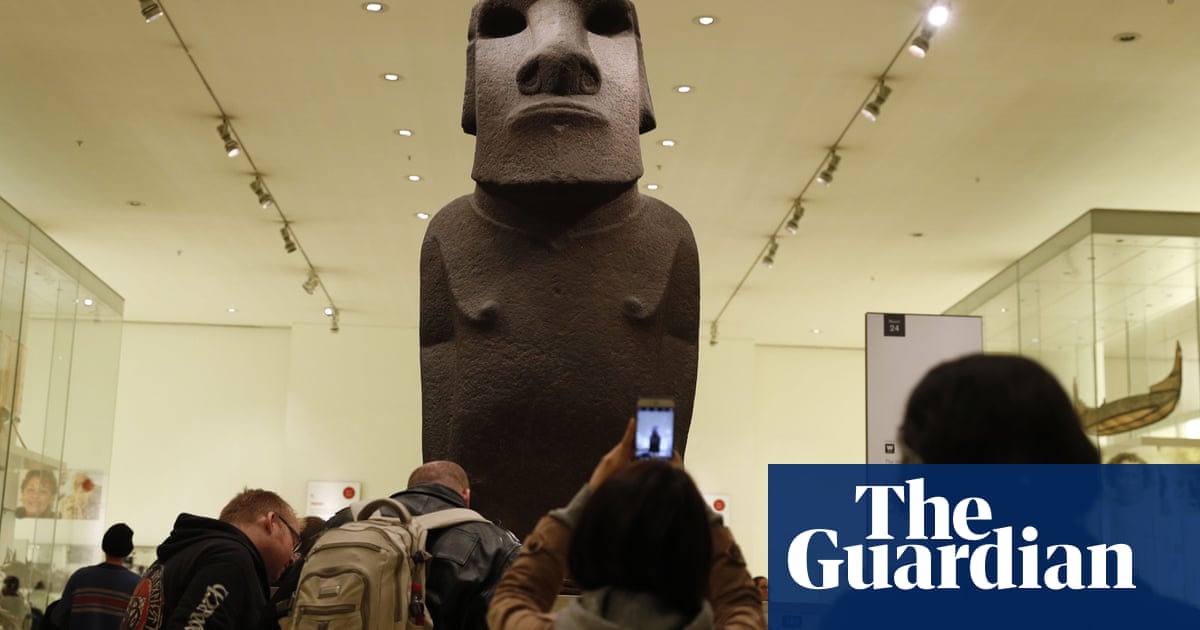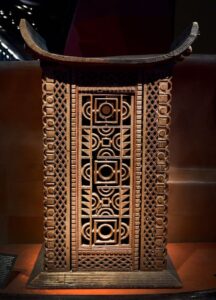
The British Museum is dealing with a surge of abusive users on social media from Chile, who have inundated the museum’s Instagram posts demanding the repatriation of a moai statue, a stone figure originating from Easter Island.
The museum possesses a pair of moai statues, originally removed from Rapa Nui (Easter Island) by British surveyors in 1868. There has been ongoing pressure for the British to repatriate the artifacts to Rapa Nui, now under Chilean control.
Starting in January, individuals using social media in Chile have flooded the comment section of the museum’s Instagram account. They have also directed their attention towards the museum’s YouTube and Facebook pages.
The museum had to shut down comments on recent Instagram posts, but has now resumed most of them. However, there are still some posts with limited commenting options.
After Santiago-based influencer Mike Milfort urged his 1 million followers to use their keyboards, an online campaign was launched to demand the museum to return the monoliths.
The theft of the moai statue is frequently mentioned in Milfort’s popular videos, causing a trend with a hashtag that even caught the attention of Chilean president Gabriel Boric. He showed his support during a radio interview in Chile.
However, the decision has faced backlash from within the island. According to Pedro Edmunds Pao, the mayor of Rapa Nui, Boric’s actions are inappropriate as they politicize a matter that holds great significance to us culturally, spiritually, and as a whole.
Rapa Nui, which is 2,300 miles west of mainland Chile, has a distinct Polynesian identity.
The inhabitants of the island have expressed a wish for increased self-governance from Chile, which took control of the island in 1888.
Edmunds Pao disagrees with Milfort’s campaign and worries that the moai are being trivialized as an internet meme, influenced by self-promotion rather than genuine care. He believes this is a misuse of the current circumstances.
Comments have been permanently disabled on a post created by the British Museum in partnership with the Youth Project charity. According to a representative, this choice was made to ensure the safety and well-being of the Youth Project.
Numerous collaborative posts on the museum’s page also disabled comments because of the trolling.
A representative from the museum stated that while they value discussion, it must also be weighed against the importance of ensuring safety.
The museum stated that it maintains positive and transparent connections with colleagues from Rapa Nui. They have extended invitations to Rapa Nui collaborators to visit London for various projects in the last two years.
Rapa Nui boasts over 1,000 moai sculptures that are globally recognized for their impressive size and the enigma surrounding their creation and transportation. These statues were meticulously carved to serve as vessels for ancestral spirits, long before the arrival of European settlers.
The Hoa Hakananai’a, one of the moai displayed at the British Museum, holds a significant meaning for the people of Rapa Nui as it is known as “the Stolen Friend”.
Uniquely carved from basalt and with petroglyphs on its back, the Hoa Hakananai’a was found in a sacred house at the site of an ancestral tradition called the Tangata manu(bird man).
In the Tangata manu tradition, males from various clans of Rapa Nui vied for control of the island. The victor was the first to swim across the open ocean to a neighboring island, retrieve an egg from a nesting sooty tern, and bring it back to land unbroken.
The Tangata manu was held annually to prevent war from breaking out between the clans, which is why the Hoa Hakananai’a is considered a profound symbol of peace.
In 2018, Rapa Nui submitted a written appeal for the repatriation of the two moai. As a result, a mutual exchange between representatives from the island and the museum occurred.
In the previous year, the council of elders on the island, who hold cultural authority, sent a letter to King Charles asking for the moai to be returned. However, they have not received a response.
“We are considering the possibility of Hoa Hakananai’a remaining in London and serving as a great ambassador,” stated Edmunds Pao. “However, it is important for us to confirm that its true owner is the culture of Rapa Nui.”
Source: theguardian.com


















